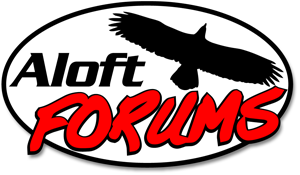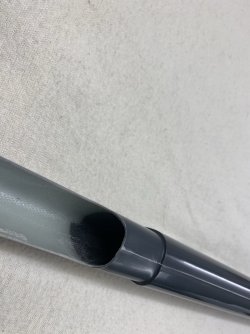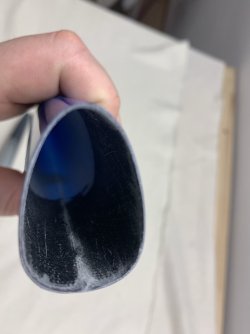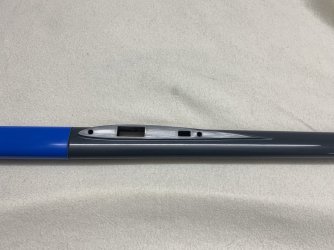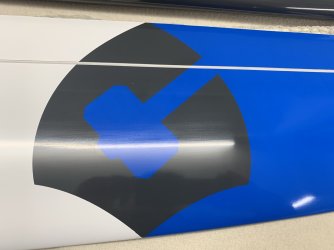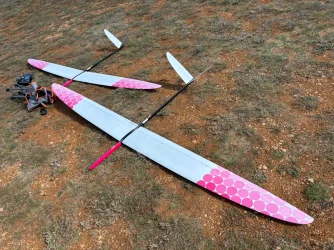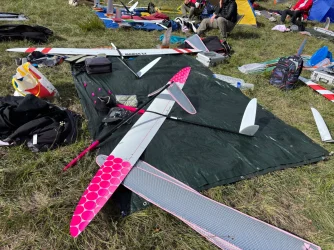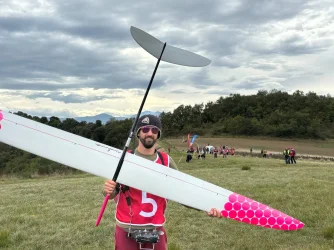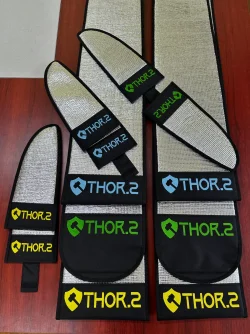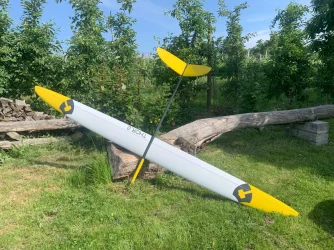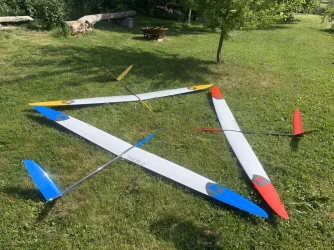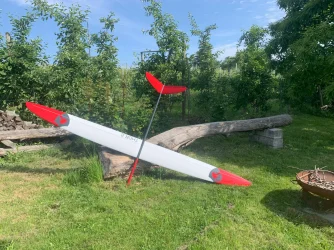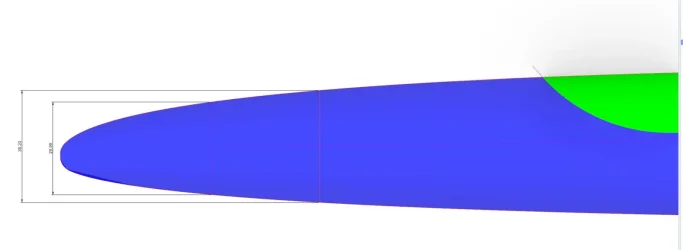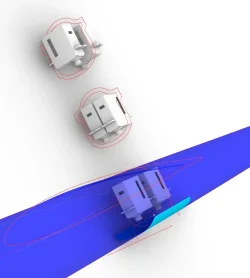I'm happy to give you a few details about this, since both models are mine. The Valkyrie is a project that I started and carried out together with Lukas Gaubatz and Martin Ziegler. It all began in October 2021, when it became increasingly clear that the boys could no longer quite keep up with the Pitbull2 and that the Pitbull3 could not meet the high expectations. Since the three of us have been good friends for many years, I have experience in aerodynamic design and Martin and Lukas could tell me exactly what they expected from a model, and CCM was behind us as a potential producer (successor to the Vantage), we started. I calculated profiles, created a proposal for the surface geometry and drew a first fuselage. Lukas and Martin wanted a no-compromise design. Everything with the smallest cross sections, including the fuselage. After several iterations, the Valkyrie design was ready. I don't think there is a narrower fuselage than this one. The profiles of the Valkyrie are uncompromisingly designed for speed. It is not a light wind model, but a real racer.
In December 2021, I had finished milling, sanding and polishing all the master forms, and everything was ready to be molded, which we then did in teamwork. In the fall of 2022, we had a total of nine Valkyries at the F3f World Championships in Denmark. Three each for Lukas and Martin and three more for Siggi Schedel, who joined the project a little later. All the effort was rewarded with a very clear victory in the team competition at the World Championships (Team Austria with Lukas Gaubatz, Martin Ziegler, Philipp Stary (Freestyler6) and myself as team manager). The Valkyrie worked well, but we simply lacked flight experience with this model.
In 2023, CCM was able to ramp up production again and wanted to launch a successor to the Vantage. Originally, the Valkyrie was intended for this. However, it turned out that the Valkyrie fuselage is much too compact for the masses. Also, the profile design is very extreme. I have revised both. The VracE hull is still very compact, but in the front area it is more voluminous than the Valkyrie. Behind the wing, the hulls are identical. The tail of the two models is identical. The Valkyrie profile gets better and better at increasing speeds. This is good, but in competition you rarely fly sub-35 seconds. So for the VracE, I adjusted the profile to the middle range (35-50 seconds) and gave it a little more maximum lift. The complete data went to CCM and they continued with everything. In June 2024, I received the first VracE and passed it on directly to Lukas for testing.
At the 2024 World Championships in France, Lukas used both models. He used the VracE one more time than the Valkyrie. His VracE had the Mahmoudi logo, while the Valkyrie had my Aerostyle branding.
